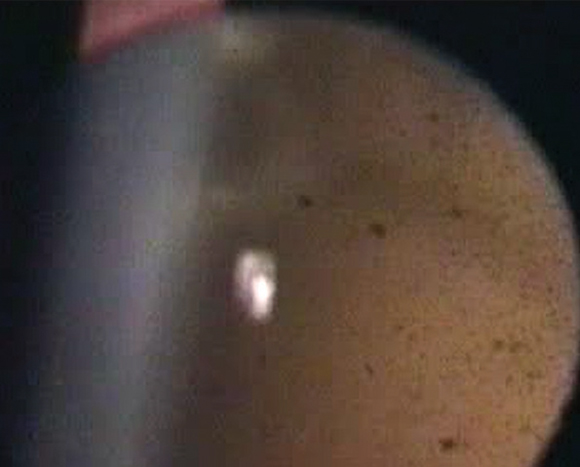 |
|
OCT devices can greatly improve the assessment of vitreous haze compared to direct fundus examination when evaluating inflammation. Photo: Jeffrey Nyman, OD. Click image to enlarge. |
A recent study demonstrated that posterior segment inflammation can be objectively graded by measuring vitreous cells on OCT. These findings suggest that cell density is a promising biomarker for grading intraocular inflammation.
In this analysis, OCT scans of uveitis patients were collected at three timepoints: with active (T0), clinically improving (T1) and resolved (T2) inflammation. The visual acuity and clinical grading of the vitreous haze (NEI scale) were assessed at each clinical visit.
The researchers calculated vitreous cell density on each OCT scan manually and automatically using a bespoken algorithm. They also indirectly measured vitreous haze on OCT by calculating the vitreous/retinal pigment epithelium (VIT/RPE)-relative intensity manually and automatically.
The study included 222 scans from 74 eyes. Data showed that both cell density and VIT/RPE-relative intensity significantly decreased over time. The study authors observed a correlation between cell density and clinical grading with a significant increase at each grade of the NEI scale. They found a positive correlation between the VIT/RPE-relative intensity and clinical grade overall; however, no significant difference was reported when comparing contiguous grades of the NEI scale.
Findings revealed that infectious uveitis had a higher cell density. The intraclass correlation coefficient between manual and automatic assessment was 0.83 for the cell density and 0.423 for the VIT-RPE-relative intensity, according to the study authors.
“Posterior segment inflammation could be objectively graded through OCT scans,” they noted in their recent American Journal of Ophthalmology paper. “Vitreous cell density was assessed manually and automatically with good agreement and correlated better with NEI clinical grading compared with VIT/RPE-relative intensity.”
The researchers concluded that vitreous cell density assessed on OCT has promise and, if additional studies confirm their findings, could become an effective biomarker for objective grading of intraocular inflammation.
Zicarelli F, Ometto G, Montesano G, et al. Objective quantification of posterior segment inflammation: measuring vitreous cells and haze using optical coherence tomography. Am J Ophthalmol. September 6, 2022. [Epub ahead of print]. |


